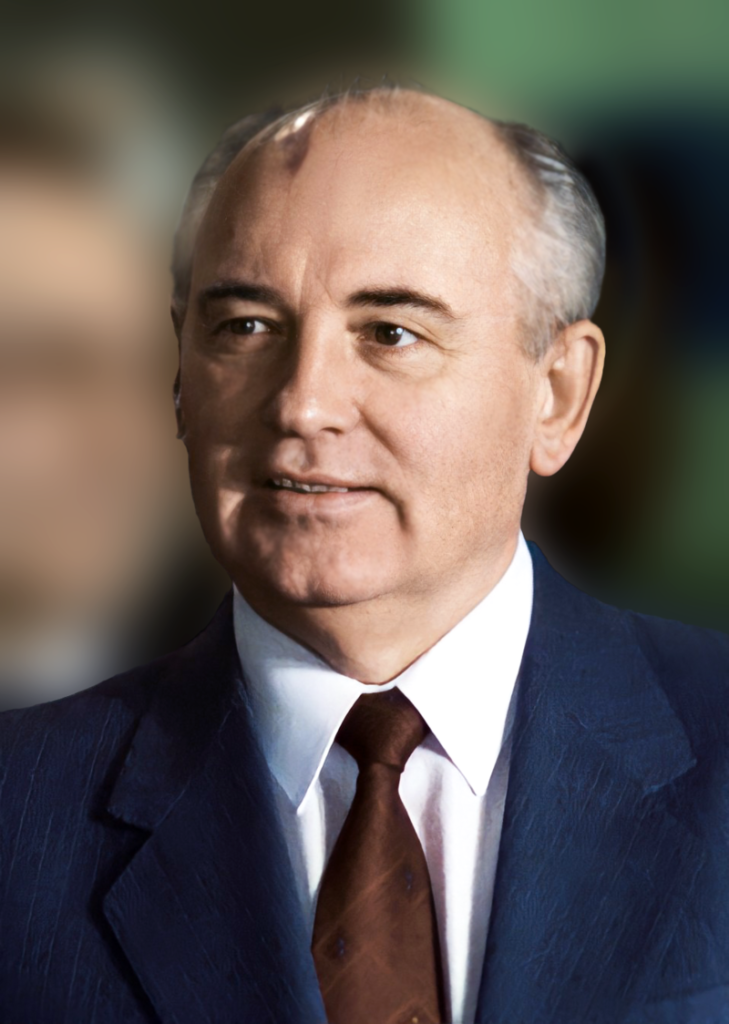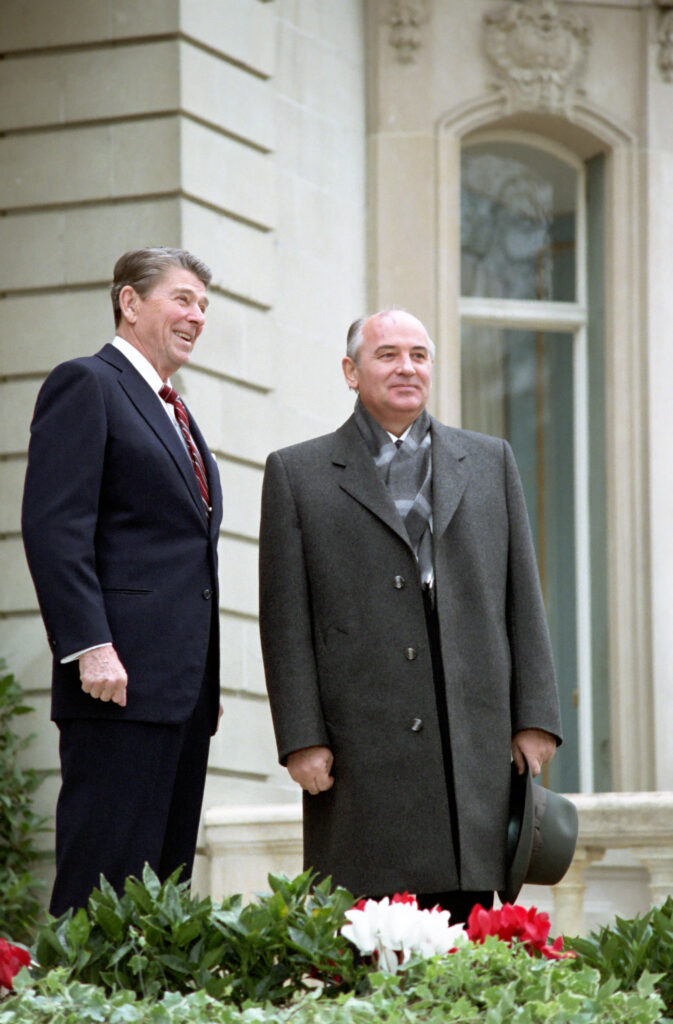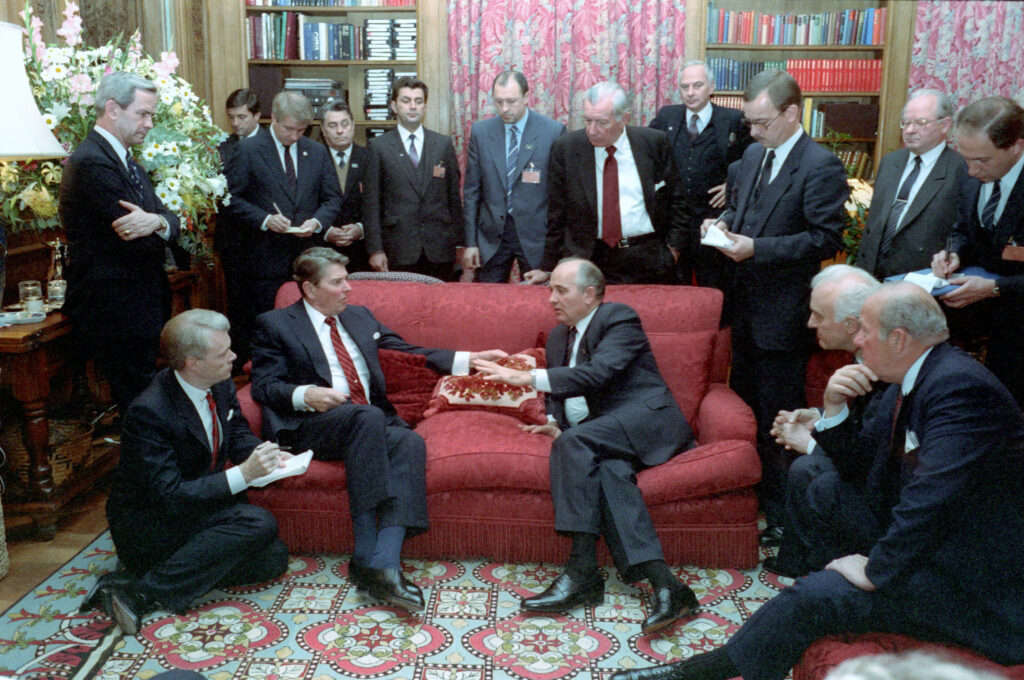Mikhail Gorbachev and a part of history goes away
Mikhail Gorbachev died in Moscow on August 30, 2022: With his policies, he put an end to the Cold War and was a major protagonist of radical changes in Russia and across the world.

Short Biography
Mikhail Sergeevič Gorbačëv, also known as Mikhail Gorbachev or simply Gorby was born in Privolnoye on March 2, 1931, to Sergey Andreyevich Gorbachev and Maria Panteleyevna Gorbacheva in a poor peasant family of Russian and Ukrainian descent, was a politician of the former Soviet Union which later became Russia from 1991 and the last general secretary of the Communist Party.
In 1952 Gorbachev joined the Communist Party and began his studies at Moscow State University, where he graduated in law in 1955. In 1953 he met and married fellow student Raissa Maximowna Titarenko later Raissa Maximowna Gorbatschowa.
With his policies, he ended the Cold War and was the author of two major reforms that radically changed not only Russia but somewhat all of world politics and geography.

Perestrojka
The term perestroika, which translated means reconstruction or restructuring is used to refer to a series of reforms initiated by the leadership of the former Soviet Union in the mid-1980s, aimed at reorganizing the economy and the political and social structure of the country. The main points of this reform were
- privatization of many state economic sectors,
- freedom of information,
- reduction of military and political control over Eastern countries,
- treaties with the United States on missile disarmament.
Relations with other countries in the world also had an improvement particularly with the United States and the EEC, while the withdrawal of troops from Afghanistan and Mongolia ended the long period of crisis between the former USSR and China.
These reforms also led to changes in the relationship between church and state, which took the form of several meetings between Gorbachev with Orthodox patriarchs and representatives of other denominations. Worship buildings previously taken away from that function were returned and the construction of new churches was authorized.
Glasnost’
The term Glasnost’ means “public domain” or “transparency” and was a reform introduced by Gorbachev in the second half of the 1980s, based, on the transparency of social-political relations and decisions and freedom of expression. The main points of this reform were:
- opening of historical archives,
- publication of hitherto banned books,
- decrease of censorship
In 1986 Gorbachev, pressing for greater liberalization rehabilitated the major Soviet dissident, Andrei Sakharov.

The above two reforms led to enormous changes in the geopolitical arena including:
End of the Cold War
The period following World War II was marked by a conflict between the United States and the Soviet Union, in which they fought not with arms but on the political and economic front.
In addition, Germany was occupied by the British, Americans, French, and Soviets, and a part was ceded to Poland. In 1949, the United States, with some European countries, including Italy, France and England, formed a defensive alliance that was named NATO (North Atlantic Treaty Organization). The Soviet government, which feared U.S. expansion into Europe, responded with the Warsaw Pact, which included the Eastern European countries and caused communist governments to be formed in those countries. Thus began the Cold War.
During the 1980s there were a number of protests and uprisings that first affected Poland, especially after the election in 1978 of Karol Wojtyla, to Pope who became John Paul II, (the handshake between John Paul II and the president of the then Soviet Union at the Vatican during a state visit in December 1989 that took place shortly after the fall of the Berlin Wall is historic).
The end of the Cold War is made to coincide with the fall of the Berlin Wall on November 9, 1989.
The reunification of Germany
The reunification of Germany took place on October 3, 1990, when the territories of the Deutsche Demokratische Republik, – DDR, (German Democratic Republic or “East Germany”) were incorporated into the Bundesrepublik Deutschland or BRD (Federal Republic of Germany, or “West Germany”) with five new Länder (federated states): Mecklenburg-Vorpommern, Brandenburg, Saxony, Saxony-Anhalt and Thuringia. Determianing fact for reunification was the fall of the Berlin Wall on November 9, 1989.
Rtl video on German reunification and the fall of the Berlin Wall (in German)
Independence of the Baltic countries
The Baltic countries, incorporated into the Soviet Union in 1940, began to push for the restoration of independence, and on March 11, 1990, Lithuania was the first of the three Baltic republics to declare its independence. On March 30, 1990, the Estonian Supreme Soviet declared Estonia‘s independence by declaring, illegitimate the 1940 annexation and on May 4, 1990, the Supreme Soviet of Latvia, also issued a similar declaration.
On September 6, 1991, the former Soviet Union also recognized the independence of the three republics.
End of the Soviet Union
The end of the rigid policy of internal repression, and the economic recession brought out the contrasts, racial hatreds and independence drives of the many peoples of the Soviet state
Gorbachev attempted to transform the Soviet Union into a less centralized state by dissolving Comecon (Council of Mutual Economic Assistance of Socialist States) and on July 1 the Warsaw Pact (Treaty of Friendship, Cooperation and Mutual Assistance among the Socialist States of the Eastern Bloc), thus loosening the ties of the hitherto satellite foreign countries.
On August 20, 1991, Russia was ready to sign the New Union Treaty, which contemplated the transformation of the Soviet Union into a federation of independent republics with a common president, but a coup was staged. Thousands of people in Moscow took to the streets to defend the Parliament and after three days, on August 21, the coup collapsed in on itself and the organizers were arrested.
Gorbachev became president of the Soviet Union again, but his position in the country was now compromised.
With the referendum in Ukraine on December 1, 1991, in which 90 percent of voters opted for independence, the leaders of the three Slavic republics (Russia, Ukraine, and Belarus) agreed to meet for a discussion of possible forms of relations, and on December 8, 1991, the agreement was signed .
On December 8, 1991, the leaders of Russia, Ukraine, and Belarus met in Belavežskaja pušča to sign the Belaveža Agreement, which declared the Soviet Union dissolved.
On December 25, 1991, Gorbachev resigned as president of the Soviet Union and declared the office abolished, conferring all his powers Boris Nikolayevich Yeltsin. On the same day, the Soviet flag over the Kremlin was replaced with the Russian tricolor.
Video of Gorbachev’s resignation broadcast by the BBC (in English)
Orders, decorations, honors and criticism
Mikhail Gorbachev was awarded the Order of the Red Labor Flag, three Orders of Lenin and many other Soviet and international honors and awards, as well as numerous honorary degrees from universities around the world. In 1990 he was awarded the Nobel Peace Prize.
The figure of Gorbachev is viewed positively in the West, which sees the fall of communism as a victory of common sense, democracy and common human values ,while in Russia he is viewed less favorably because of the dissolution of the Soviet state and the end of superpower status but also the years of political chaos and deep economic crisis that followed.
His passing
His homeland did not give too much prominence to his departure that took place in Moscow at the age of 91.The body will be displayed in the capital at the House of Trade Unions as was done for Lenin and Stalin. Neither Russia’s current President Vladimir Putin (officially unable due to other commitments) nor any other foreign heads of state will be present at the state funeral (initially it seemed they would not even be held) to be held on Saturday, September 3, 2022. The President of the Russian Federation expressed his condolences by stating that “Mikhail Gorbachev understood that reforms were necessary and was committed to finding solutions to the problems that the Soviet Union faced in the 1980s and had a huge impact on the course of world history.”
.
By his express wish, he will be buried in the Novodevicij Monumental Cemetery, next to his wife Raijssa who passed away in 1999.
He leaves a daughter and two grandchildren.





